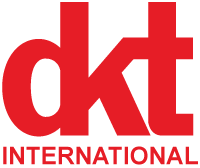 Special to the Philanthropy Journal
Special to the Philanthropy Journal
By Christopher Purdy
According to Giving USA’s 2018 numbers, the $427.7 billion that Americans gave to charities in 2018 represented a slight increase over 2017 donations, although the inflation-adjusted total actually declined by 1.7%. There were gainers (environment, international affairs, animals), losers (religion, education, foundations), and added complexities courtesy of the Tax Cuts and Jobs Act of 2017.
Did organizations with declining revenue predict the decline? Could they have? Did the gainers do anything proactively, or were they just beneficiaries of a trend? While few organizations have crystal-ball foresight around applying the perfect math or metrics, those that succeed maximize their control over those financial elements that they can actually make plannable in the first place.
 The Importance of Planning
The Importance of Planning
If you hope for mission success and longevity, you need as clear of a picture as possible of your financial future. It’s the knowledge that allows you to plan for growth, allocate financial and human resources, staff up or scale back, and so on. If you have little idea where your next dollar is coming from, or if you make incorrect assumptions, you’re placing all your effort and mission in jeopardy.
My organization, DKT International, is one of the largest global providers of family planning, HIV/AIDS prevention and safe abortion technology and services in the world. Year-over-year, since 1989, we have grown in geographical reach, revenue and, most importantly, in the number of couples, women and young people we serve (we call our metric “couple-years of protection”, or CYPs.) We are compulsive planners. We have to be if we hope to continue our growth and expand our mission. Based on our experience, here are a few suggestions.
Look for Approaches That Fit
No matter how noble, life-saving or urgent your mission, the unromantic need to raise funds is a relentless taskmaster that demands you honestly appraise what’s working and what isn’t, whom you want (and don’t want) to appeal to and how, and even whether you’re considering all the options. Perennial top charity United Way raised $3.92 billion in 2018 through workplace campaigns, planned giving, and other means. Salvation Army, with $3.2 billion in 2018 revenue uses a very different model, turning in-kind donations into revenue-producing sales, among other methods. While these organizations may be giant fund-raising machines, their different approaches represent a couple of the many possibilities. The point is to find what works for you and to be willing to change.
Know and Court the Right Donors
How well-aligned are you with donors? Nonprofits that rely heavily or even solely on donors – especially large donors – risk being more donor-facing than constituent-facing. In worst case scenarios, being heavily dependent on a donor can result in the donor forcing an agenda that is not aligned with your organization’s missions. For example, if your organization works to educate children in Sub-Saharan Africa, and a large donor suddenly wants you to spend their resources on malaria prevention, you’re going to lose focus. To avoid that, it is important to 1) ensure your organization and donors are well aligned on mission and 2) diversify your donor base. Diversification flattens out the highs and allows for greater revenue predictability. Finances can be more stable and predictable when you have confidence that your donors won’t try to send you off in another direction. And a financially stable nonprofit can turn away donors whose goals are not aligned.
Have the Courage and Creativity to Diversify Revenue Sources
Are you able to diversify your sources of revenue? Many nonprofits have found that a hybrid approach of commercial activity and donations give them both flexibility and fiscal predictability. Habitat for Humanity, for example, accepts financial donations and relies on volunteer labor to build homes for those in need of decent, affordable housing. But these houses are not free, and the recipients are expected to repay an affordable mortgage or small loan.
Museums have sustentation campaigns but also have gift shops. Not-for-profit colleges and universities aggressively seek alumni donations but also charge tuition and fees as well as sell college hoodies. DKT seeks and accepts contributions from foundations and other donor sources, but also earns some 75% of our $200 million in revenue from social entrepreneurship, selling reproductive products and services at affordable prices via locally-managed entrepreneurial “businesses.” Indeed, in 2005, donor funds were eclipsed by our sales revenue – and we never looked back. This independent source of income has diversified our income and helps ensure our stability and fiscal predictability. Furthermore, it demonstrates to our donors that we have “skin in the game” and are invested financially in our own results.
Consider Self-generated Income
While not every nonprofit has the ability to generate its own income by monetizing its services, many do, even if they don’t realize it. Creatively looking for ways to monetize can reveal promising ideas for creating a profit center within your enterprise. Assuming your services or products have a value to your constituents, consider asking them to pay something for them. If you provide tutoring to children, can you charge $1 per hour instead of providing those services for free? Can you charge a small membership fee for receiving health care? When you train people, charge a small cost. In some countries, DKT sells condoms for $.05; this does not sound like much, but if you sell 10 million condoms, it adds up. Some organizations have ventured into selling products (ties, soap) that are not mission-centric.
Thinking about generating your own income comes with its own set of variables based on forces that may be well outside your control. These forces may range from simple market fluctuations to political issues, social changes and more. Effective financial planning means considering all of the factors that may – even a few years down the road – impact your ability to generate revenue. The trick is to identify them all.
Do You Want to Become 100% Self-sustaining?
At DKT we don’t want to go that far. We closely track the percentage of income self- and donor-generated, but do not have a goal to achieve 100% sustainability. Simply put, there will always be donors large and small who want and need to give, and we believe that DKT offers a cost-effective investment with a high impact payout. But donors also like to have exit plans. They’re considering your financial health, too, and don’t want to think that you are solely reliant on them forever. Consider their perspective. They prefer some self-reliance on your part because they know it will increase your likelihood of mission success. So, while working to earn the trust of willing donors is a sound strategy, ensuring you don’t become donor-dependent is equally wise.
People Make All the Difference
The success or failure of any enterprise – nonprofit or for-profit—depends on people. Ask yourself if there are people who can tell your story well and raise money. Donors are always evaluating whom they’re dealing with. You will need people with both solid business sense and experience as well as those who know how to serve constituents.
While it may not be possible to perfectly predict your financial health five or more years ahead, following a few simple rules will help maximize your mission success and longevity:
- Thoroughly analyze the forces affecting your revenue.
- Diversify your donor base.
- Be creative in considering funding options not tried before.
- Look for ways to at least partially self-fund.
- Make sure you have people with business acumen on board.
- Never take any revenue source for granted.
Christopher Purdy is President and CEO of DKT International. From 1996 to 2011, he served as country director of DKT programs in Turkey, Ethiopia and Indonesia, where he managed the largest private social marketing family planning program in the world. He served as executive vice president from 2011 to 2013. He also serves as the CEO of carafem, a network of reproductive health centers serving populations in the USA. He is the author of numerous articles on family planning and social entrepreneurship.





